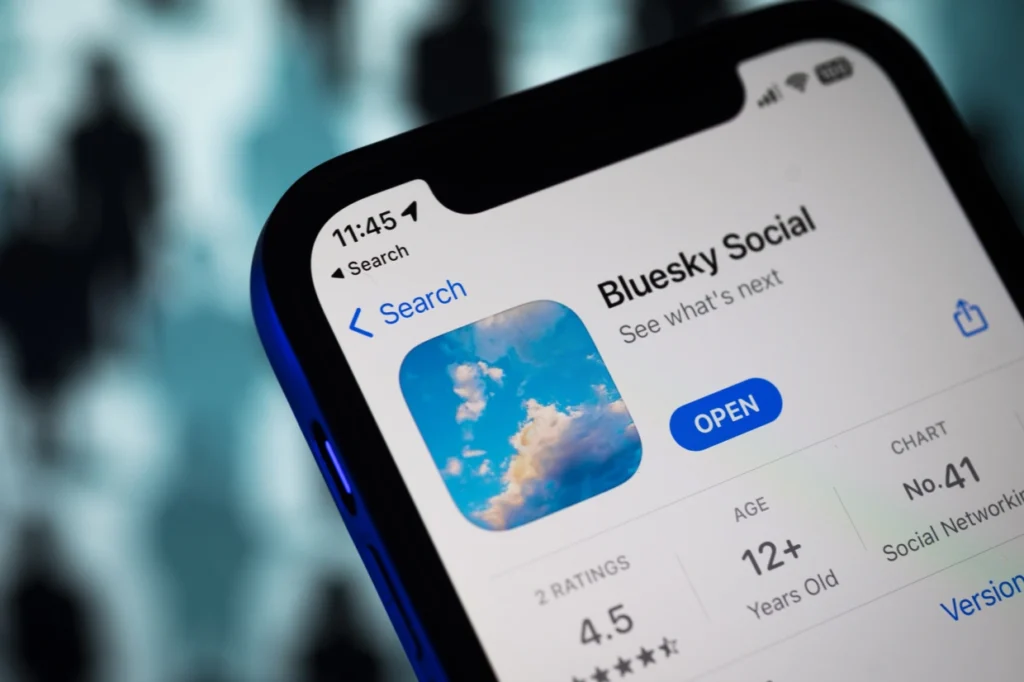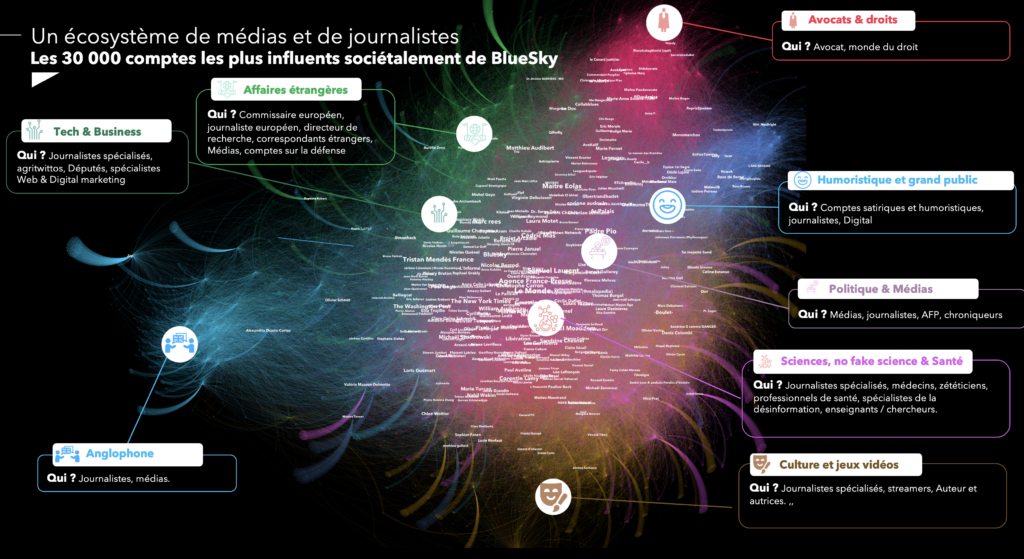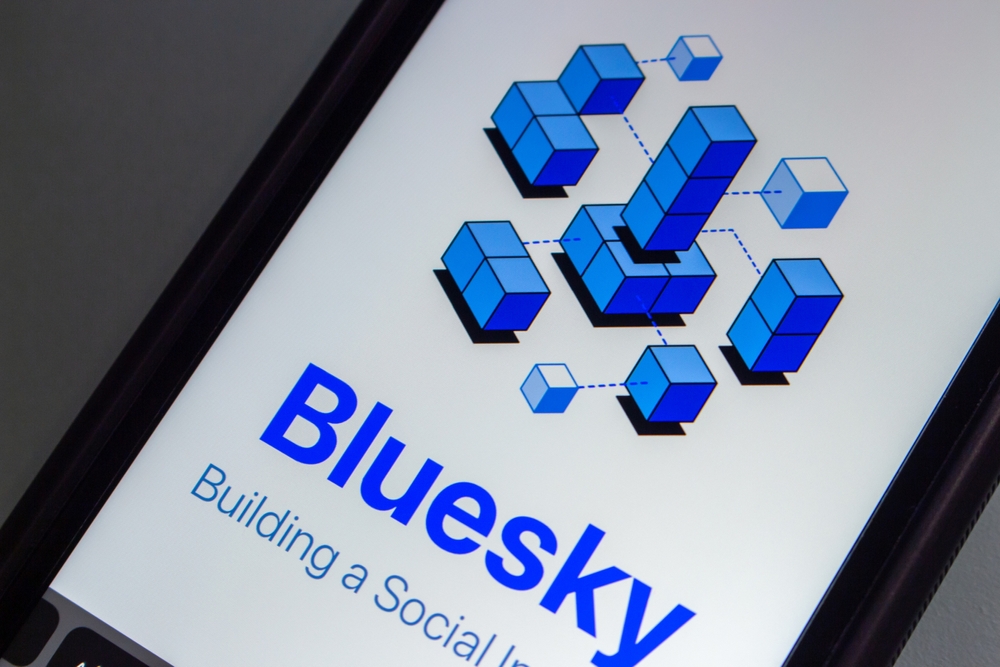Sommaire
Should You Join Bluesky? Analysis of the 30,000 Most Influential Accounts on the Network
In a constantly evolving media landscape, organizations and businesses often face decisions regarding their presence on social media platforms, driven primarily by the fear of missing out on the next big platform they can't afford to overlook. However, in recent years, it has rarely been wise to invest in alternative networks when considering platforms like Elo, Mastodon, "Parler," or others that sought to position themselves as "killers" of pre-existing social networks.


The emergence of Bluesky, a decentralized social platform, offers new perspectives and challenges, especially when compared to established platforms like Twitter. The current situation of Twitter/X, marked by notable changes in its management, moderation policies, and audience, has created space and opportunities that Mastodon (in an attempt at resurgence), Bluesky, or Threads aim to capitalize on.
So, regarding Bluesky, should one establish a presence there? Who are the key players on the platform? Is it different from X? I explored these questions by analyzing the most influential accounts on Bluesky and mapping the network.
Executive summary
Bluesky is a network that borders on amateurism in its follow system, with an algorithm based on the people you follow. It's a very rudimentary version of Twitter with almost no innovation.
The platform is heavily dominated by journalists with a strong left-leaning bias. Interactions are much healthier than on X. Few politicians are present, and those who are have not established a significant presence except for Thierry Breton. (44 national and European MPs, mainly from NUPES, with an average of 236 followers and 26 posts)
Activity, except for the hyper-active users, is extremely low. (An average of 308 posts for the platform’s top influencers...)
There are no strong thematic communities. No gaming community (although there is a cultural one and a few streamers), sports and crypto are not as prevalent as on X. On societal issues, there are also no well-formed communities on typical topics (transportation, agriculture, health).
The potential francophone audience is around 15,000. Too small for a dedicated strategy.
In conclusion:
- From an individual standpoint, Bluesky can be tricky to get into because the follow system that defines your experience is flawed. However, the platform is much healthier than X. On the downside, debates are almost nonexistent or very well-argued/polite. This will appeal to left- and center-leaning individuals, much less so to right-leaning people who will find themselves isolated on the platform.
- From a political or associative standpoint, the platform is almost irrelevant today given the small audience and limited societal fabric. I say "almost" because niche strategies could still be relevant in PR (few politicians on the platform while many journalists are present) or within leftist positioning (with some activism present).
- From a business perspective, implementing a dedicated strategy at this stage seems like a mistake, given the small audience base (15k by my estimate). Here too, a niche strategy might be more appropriate. This could involve deploying a public relations strategy focused on journalists or on "left-winging" an organization. From a marketing and mass consumption standpoint (B2C logic), you should steer clear of this network.
- In terms of lobbying and societal pressures, the platform is entirely uninteresting. There’s no buzz mechanism, no presence of key stakeholders—these approaches should be avoided.
In my opinion, Bluesky will never be a credible competitor to X. It's an interesting parallel network for individual use. However, with a technology that boils down to being an ancestor of X, a total lack of thought on the platform’s deployment and its algorithmic following logic, and a sanitized atmosphere that may please users but hinder its promotion, I would bet heavily that the platform will remain relatively confidential or niche. I believe organizations should simply reserve their handle on the platform, perhaps post the same content they share on X, but should not develop a deployment strategy for this platform as it stands.
Of course, things can evolve quickly, and Elon Musk could make a mistake on X that changes everything, but it would still take a cataclysm for Bluesky to become the new pre-Elon Musk Twitter.
Methodology and Initial Assumption
I began the analysis with the perspective of questioning the legitimacy of a societal presence by organizations and companies on the BlueSky platform.
As the leader of Saper Vedere, I focused on analyzing the network as a tool to establish a social license to communicate or operate through key stakeholders recruited and aggregated via a digital presence. Therefore, I did not consider or analyze BlueSky from an individual perspective (Is it good to join BlueSky as an individual?) or from a marketing perspective (Is there a funnel or conversational opportunity to adopt a strategic presence?).
Thus, I aimed to understand the 30,000 most influential profiles from a societal standpoint on the platform, starting with a small initial list of media outlets and journalists to isolate whom they follow and analyze how these 30,000 profiles follow each other.
Mapping of the Most Societally Influential Accounts on BlueSky

We identified the following communities (by size):
Culture and Video Games (6167)
This community is extremely diverse and could be called "general public." It includes early adopters of technology, culture and gaming journalists, streamers, cinema fans, and all the custodians and fans of web culture.
Anglophone (4500)
This community includes many people from the US followed by French-speaking spheres, as well as numerous bilingual Francophones who follow news in English. It also includes correspondents and journalists.
Academic and Specialized Journalists (3830)
This community is composed of the academic and scientific community, including many specialized journalists in research/science and others. It also includes teacher-researchers. It is not visible on the visual map as it is truly buried in the center of everything.
Tech & Business (3808)
This community has a strong technological component with journalists specialized in the web and technologies, well-known accounts from the digital sphere, and accounts focused on economic issues (interestingly, agritwittos are found here).
Foreign Affairs (3573)
This community includes diplomacy, foreign correspondents, the European bubble, and accounts specialized in defense and the military.
Politics & Media (3465)
Mainly journalists and media outlets, but also political analysts/commentators. On the chart, this is the "lawyers and rights" community, which is actually broader than that.
Humor and General Public (2830)
This community includes people involved in satire and humor.
Sciences, No Fake Science & Health (1826)
This community includes doctors, fact-checkers, and skeptics.
A Very Sparse Network
The first thing that strikes in the ecosystem is the desegregation of communities. Logically, we are looking at the 30,000 most important accounts on the platform, and yet, they are very loosely connected. The most-followed account (Le Monde) is barely followed by 507 people. For the third, AFP, this number drops to 443 people (representing barely 1.4% of the 30k people in the studied ecosystem).
By comparison, the Follaw panel of 18,000 people on X has Emmanuel Macron as the most influential person, with 7,297 followers among the 18,000, and Le Monde has 6,568. In short, BlueSky suffers from a significant problem of network structuring, which is mainly due to several factors:
- Its Deployment Model: Offering keys to sign up is interesting from a devops perspective to limit growth and create scarcity. However, this creates a system where people are drastically missing, and following/follower practices are very complicated on the platform.
- Extremely Faulty Follow Recommendations: BlueSky does not offer a proper follow system. One might have thought they would have integrated all the logics that X has gradually imposed, but the recommendation of profiles, management of arrivals, and others are completely lacking. For example, here are the profiles that BlueSky recommends I follow.

On the other hand, unlike emerging networks like TikTok, which is based entirely on the user-content relationship, BlueSky remains a network structured around the people you follow. (Moreover, an analysis by Flefgraph with another interactional methodology identifies almost exactly the same communities, proving the influence of relational networks.) The platform's quality, therefore, comes from the network you build. And in this regard, we're in the middle ages of the discipline with an essentially American prism, disregarding all the evolutions of relational social networks, verging on pure amateurism. And the numbers don’t lie. On average, the 30k people follow 313 others. The average (due to people engaging in mass following) on X is 3,709.
Finally, the virality of content depends on the network's density and the famous degrees of separation between people (see Milgram’s theory on degrees of separation). The lack of connectivity between accounts makes content virality much more difficult than on X, and BlueSky’s algorithm is totally ineffective outside its networks, offering content in English or other languages but also content that is of absolutely no interest to the person present. In this respect, it feels like we are in the medieval age of network algorithms, which stands in stark contrast to new platforms like TikTok, which operates almost without the influence of follow networks.
A Left-Wing Social Network
Let’s be clear: BlueSky, in the Francophone sphere, is a left-wing social network, reminiscent of the right-wing social networks of a few years ago where recalcitrant profiles rejected by X isolated themselves (Parler / Truth Social, Gettr, and others). No center or right-wing media outlets are present. (Notably, some Figaro journalists, such as Chloé Woitier, are present.) This creates a much more serene climate for the platform since, with no right-wing individuals, there are no political altercations on the platform. This will appeal to those on the left, perhaps a bit less to other political sides.
A Network of Journalists
All communities are primarily formed by journalists who are highly active on the platform. This presence is also predominantly left-wing (Mediapart, Libération, Telerama) and centrist (AFP, Le Monde).
A Network of Early Adopters
Having experienced a very early phase of Twitter, BlueSky carries a nostalgic flavor, offering accounts of early adopters of social networking platforms. Therefore, there is always a digital tint in almost all communities. However, the same phenomenon can be observed on Threads.

Total Absence of Thematic Communities
Thematic communities do not emerge. Today, networks are "globish" and all-encompassing. Even the community of lawyers is actually within the media and political community. Where on Twitter, beyond the media, we observe thematic communities such as transportation, agriculture, economics, and many other themes, they are completely absent on BlueSky. Among the general public, major audience providers like sports, gaming, and cryptocurrencies are also almost entirely absent except in a few sub-communities. (There are gaming accounts, but they do not strongly structure the audience.) Similarly, the news and analysis of the Ukrainian war could have been more visible in terms of community, as the main actors on this topic on X are present on BlueSky, but this is not the case.
A Network Where Companies and NGOs Are Absent
Apart from early adopters and journalists, it is challenging to identify key profiles from X such as NGOs (Cécil Duflot embodies Oxfam, Anticor is present, but beyond that, nothing emerges among the most influential profiles) or companies. The latter have secured their account handles but do not have a presence strategy and do not appear at all in our analysis of the most influential profiles on the network.
Politicians Have Created Accounts but Have No Presence and a Minimal Audience
Aside from Thierry Breton, politicians are not very influential on the platform. Forty-four deputies (national and European) have registered today, but they have an average of 236 followers (sic) and... 26 posts. In other words, they dipped their toes in the water without diving in. The majority are from NUPES (mainly EELV) and a few from LREM. As for the RN and LR, they are completely absent.
An Extremely Light Audience Pool
On average, the top 30k societal accounts on the platform have 747 followers... The audience is currently primarily American. I estimate the maximum audience potential for an account to be around 15,000. (Of course, individual posts can have more than that.) The leading Francophone account in terms of followers, AFP, is around 14k. This remains very (too?) light to justify a dedicated strategy. The temptation to duplicate X content will be strong.
This concludes the complete and detailed analysis of BlueSky’s structure; the world of social networks is becoming increasingly fragmented. Hence the importance of having a nuanced understanding of networks and opportunities. I look forward to deploying the same analysis on Threads. In the meantime, I am available for questions about BlueSky on LinkedIn, X... and BlueSky too!
Photo credit: Shutterstock



